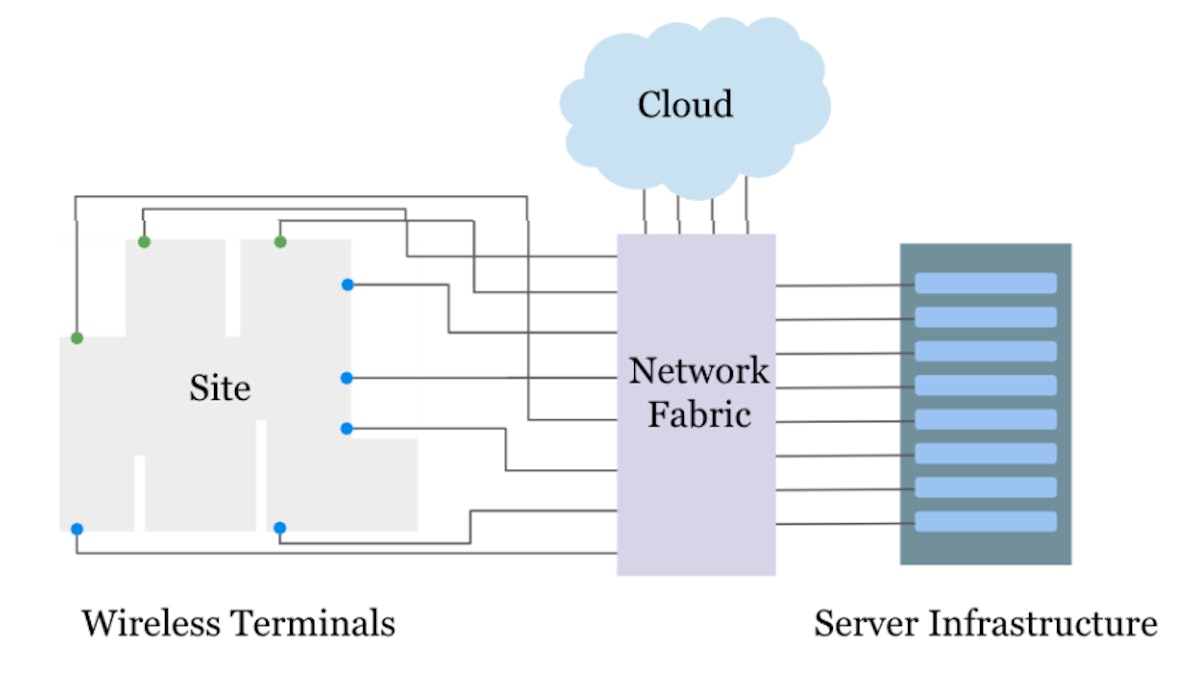This paper is available on arxiv under CC 4.0 license.
Authors:
(1) Samie Mostafavi, ssmos, KTH Royal Institute of Technology;
(2) Vishnu Narayanan Moothedath, vnmo, KTH Royal Institute of Technology;
(3) Stefan Ronngren, steron, KTH Royal Institute of Technology;
(4) Neelabhro Roy, §nroy, KTH Royal Institute of Technology;
(4) Gourav Prateek Sharma, gpsharma, KTH Royal Institute of Technology;
(4) Sangwon Seo, sangwona, KTH Royal Institute of Technology;
(4) Manuel Olgu´ın Munoz, [email protected], KTH Royal Institute of Technology;
(4) James Gross, jamesgr, KTH Royal Institute of Technology.
Table of Links
- Abstract & Introduction
- Testbed Design and Architecture
- Experimental Testbed Validation
- Supported Experimentation
- Acknowledgements & References
Abstract
This paper presents ExPECA, an edge computing and wireless communication research testbed designed to tackle two pressing challenges: comprehensive end-to-end experimentation, and high levels of experimental reproducibility. Leveraging Openstack-based Chameleon Infrastructure (CHI) framework for its proven flexibility and ease of operation, ExPECA is located in a unique, isolated underground facility, providing a highly controlled setting for wireless experiments. The testbed is engineered to facilitate integrated studies of both communication and computation, offering a diverse array of Software-Defined Radios (SDR) and Commercial Off-The-Shelf (COTS) wireless and wired links, as well as containerized computational environments. We exemplify the experimental possibilities of the testbed using OpenRTiST, a latency-sensitive, bandwidth-intensive application, and analyze its performance. Lastly, we highlight an array of research domains and experimental setups that stand to gain from ExPECA’s features, including closed-loop applications and time-sensitive networking.
Index Terms—Edge computing experimental platform, reproducibility, end-to-end experimentation, wireless testbed
I. INTRODUCTION
As we move onto the next decade, edge computing applications are poised for significant growth, fueled by advancements in wireless technologies such as 5G and Beyond 5G (B5G), as well as breakthroughs in compute-intensive tasks like model predictive control, multimedia processing, and machine learning algorithms. In order to achieve trustworthiness and dependability in these interdisciplinary, distributed systems, involving computer science and wireless research, it is imperative to develop sophisticated scientific tools. On one hand, research in areas like wireless networking methods necessitates close interaction with radio hardware and a high degree of adaptability, as facilitated by Software Defined Radios (SDRs). Conversely, the computational aspect requires performance workloads to be adaptable to fluctuating network conditions, necessitating the creation and efficient repeatable testing of innovative computing algorithms. End-to-end experimentation is essential for obtaining a comprehensive understanding of the system as a whole and for devising innovative approaches to overcome existing bottlenecks. Additionally, the ability to efficiently replicate these experiments is key to allowing other researchers to easily validate findings.
In this realm of research, we find a diverse landscape of testbeds that have emerged in recent years, each distinguished by its size, applicability, and feature set. Notable ones include the 1) COSMOS, 2) POWDER, 3) ARA, and 4) Drexel Grid SDR testbeds. COSMOS (Cloud enhanced Open Software defined MObile wireless testbed for city-Scale deployment) is a testbed spanning over 1 square mile, equipped with an array of resources, including Software-Defined Radios (SDRs), millimeter-wave (mmWave) equipment, optical fibers, and various computational nodes for core functionality and application processing [1], [2]. COSMOS integrates with cloud infrastructure, with a primary focus on advancing cloud computing research. This testbed includes a diverse set of rooftop, intermediate, and mobile nodes, all centrally controlled.
POWDER (Platform for Open Wireless Data-driven Experimental Research) serves as an even larger testbed, offering a platform for exploring wireless and mobile networks with a high level of programmability that extends down to the waveform level [3]. Covering an area of 15 km2 , POWDER comprises fixed, programmable radio nodes constructed using off-the-shelf SDR technology. The platform seamlessly integrates with cloud and edge-like compute capabilities, allowing mobile nodes to tap into the compute resources.
The Drexel Grid SDR testbed features SDRs that connect over-the-air (OTA), channel emulator, or alternatively a combination of the two, to enable realistic and reproducible experimentation. Even though the testbed provides freedom in terms of experiment development, it is intended primarily for SDR-related research, and does not integrate any core, cloud or edge components.
ARA (The Agricultural and ruRAl communities) represents a wireless research platform, spanning a rural expanse with a diameter of 60 km in Iowa [4]. ARA’s mission is to investigate wireless platforms and technologies within the realworld context of agricultural settings. The testbed incorporates a diverse array of wireless platforms, implemented through SDRs and programmable Commercial Off-The-Shelf (COTS) radios along with automated vehicles and various cameras and other sensors. ARA’s testbed software builds upon the Chameleon Infrastructure (CHI) software framework from the Chameleon testbed project [5]. Chameleon primarily serves as a bare-metal reconfigurable research testbed designed for edge-to-cloud experimentation, adapting the cloud paradigm for computer science research. Since its public unveiling in 2015, Chameleon has accommodated over 6,000 users across more than 800 projects, gaining valuable experience and refining methods for automating and managing research infrastructure sites. This accumulated knowledge has been encapsulated in the CHI-in-a-Box [6] testbed software distribution, which aims to simplify and optimize the deployment and operation of future associated or independent Chameleon sites.
Existing wireless research-focused platforms like COSMOS, POWDER, and Drexel Grid employ their own specialized software solutions, which are not in line with prevailing cloud-native standards. These testbeds also utilize virtualization technology based on Virtual Machines (VMs), rather than opting for lighter and more edge-compatible solutions such as containers. Similar to the approach taken by the ARA testbed, we found that CHI-in-a-Box presents an excellent opportunity to develop experimental platforms at minimal cost, while offering significant flexibility in both cloud and edge-native technologies. However, when it comes to reproducibility in wireless edge-computing research, existing large-scale testbeds have limitations that we aim to address by introducing our testbed, ExPECA. By ‘reproducibility’, we mean the capacity for researchers to easily replicate experiments and validate results. Achieving this is particularly challenging for two main reasons: one, edge computing experiments involve a range of heterogeneous components like servers and radios, all interacting within a single experiment; and two, the existence of wireless links introduces variables such as interference and dynamic propagation conditions that must be controlled for consistent results. Owing to its unique design choices, ExPECA provides a highly reproducible environment for endto-end wireless and edge computing experimentation, making it one of the first platforms to effectively address this issue. In the following section, we delve into these design intricacies and their consequential impacts.


